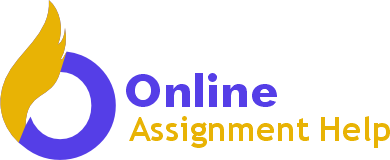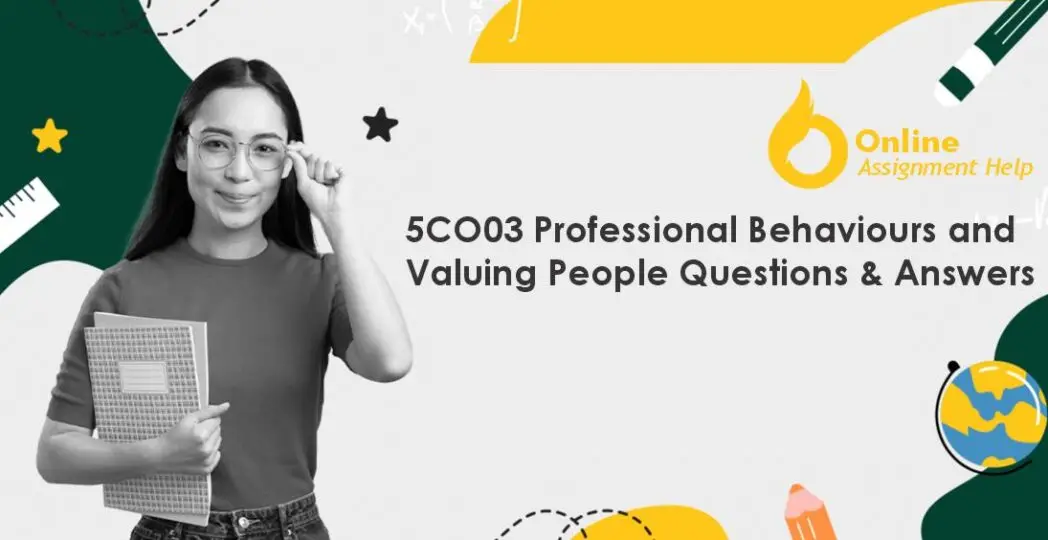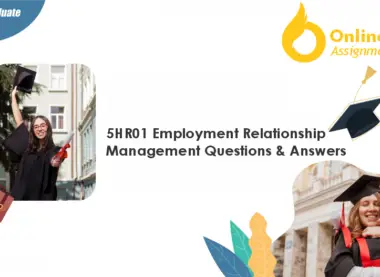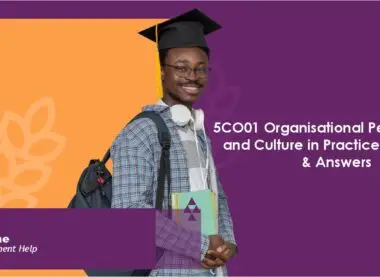Table of Contents
5CO03 Professional Behaviours and Valuing People Questions
Task – Professional and Ethical Behaviours
Please respond to all 11 questions below:
An effective people practice professional will:
- Understand the purpose and value of the people profession.
Q: With reference to the CIPD Profession Map, appraise what it means to be a people professional. (AC 1.1) - Know own personal and ethical values and apply these consistently in their (people practice) work.
Q: Discuss your personal and ethical values (one of each), with examples of how these are evident in your work. (If you have yet to work in people practice, explore how you believe your values would inform your work.) (AC 1.2) - Know the importance of people professionals contributing to discussions in an informed, clear and confident way to influence others.
Q: Discuss reasons why this is important and the consequences of people practitioners not being willing or able to influence others. (AC 1.3) - Know when and how to raise matters that might be unethical or illegal.
Q: Discuss, with examples, when and how you would react to both unethical and illegal matters (one of each). (AC 1.4) - Be able to make use of related theory and thinking, to argue the human and business benefits of people feeling included, valued, and fairly treated at work.
Q: Demonstrate your ability to do this with a written argument, which poses different theoretical perspectives, as well as your own. (AC 2.1) - Know how to design people practice initiatives to be inclusive and how to check
inclusivity after an initiative has been implemented.
Q: Discuss, with examples, how you have, or would, achieve both of these (AC 2.2) - Be able to work inclusively with others and build positive working relationships.
Q: Using a combination of your own reflections and feedback from at least one other person, discuss your ability to work inclusively and positively with others. (AC 2.3) There is no requirement to include evidence of the use of references to wider reading for AC 2.3 - Understand how the people practitioner role is evolving and the implications this has
for your ongoing professional development.
Q: Demonstrate your understanding of this with a written response and related entries in
your CPD Plan. (AC 3.1) - Be able to assess (own) strengths, weaknesses and development areas, based on own considerations and feedback from others.
Using a combination of your own conclusions and feedback from at least one other person,
assess yourself against a specification of your choice (such as a role/job description or any
two of the core behaviour areas of the CIPD Profession Map (associate level). Briefly explain the outcome of your assessment (strengths, weaknesses and development areas) and the information that informed your conclusions. (AC 3.2)
There is no requirement to include evidence of the use of references to wider reading for AC 3.2 - Be able to formulate a range of appropriate CPD options to support ongoing learning.
Following on from your self-assessment, identify a range of formal or informal development activities and add these to your CPD Plan/document. Provide a brief explanation as to why you have selected these activities. (AC 3.3)
There is no requirement to include evidence of the use of references to wider reading for AC 3.3 - Be able to reflect on and draw conclusions about the effectiveness of development
activities.
Reflect on three development activities, already undertaken, that have had an impact on your work behaviour or performance, explaining how they have impacted you. (Your reflections should be presented within your CPD Record document.) (AC 3.4)
There is no requirement to include evidence of the use of references to wider reading for AC 3.4
5CO03 Assignment Answers
Appraising the Role of a People Professional through the CIPD Profession Map
Strategic Contribution to the Organization
According to the CIPD Profession Map, being a people professional is about strategic partnership with organizations (CIPD, 2021). People professionals align HR functions, including talent management, workforce planning, and employee engagement, with long-term business objectives (Kandukuri, 2023). This strategic approach helps ensure HR is for organizational success and not just administrative, hence driving areas of innovation, performance, and employee development.
Upholding Ethical Standards
A key aspect of the role is ethical practice. The CIPD outlines that people professionals must demonstrate integrity to ensure that HR policies and decisions are equitable and inclusive and will offer positive support toward the well-being of employees and the organization (Adekoya, 2022). Professional courage pertains to challenging practices or decisions that might harm the organization or its workers so that ethical standards are always upheld.
Collaboration and Influence
The CIPD Profession Map also underlines collaboration as another key area. Collaboration around people professionals should be effective at a wide-scale level, from the most senior leaders down to an operational team environment that drives shared accountability and inclusive culture (Boselie and van der Heijden, 2024). Collaboration and influencing introduce positive changes to the environment. People professionals adopt active change agent roles in securing alignment of HR practices with business and employee needs (CIPD, 2021).
Enhancing Employee Experience
People professionals also focus on enhancing the employee experience, as defined in the Profession Map (CIPD, 2021). This includes creating a supportive work environment where employees can develop to achieve personal and organizational success. It’s about championing initiatives that promote employee engagement and well-being-a key factor in having a productive and motivated workforce, one that’s essential for outcomes in sustainable business.
Personal and Ethical Values in My People Practice
Personal Value: Integrity
Integrity is one of my core personal values, and it plays a significant role in how I conduct myself professionally. The meaning of integrity to me as an HR professional at Renishaw encompasses transparency and consistency in all interactions, particularly concerning sensitive employee issues. For example, during performance reviews, I ensure that feedback is honest and constructive, focusing on the facts while offering support for improvement. By maintaining transparency, I build trust with employees and managers, ensuring that the HR function is seen as a reliable and ethical part of the business.
Integrity also guides my decision-making when balancing organizational needs with employee well-being. I, for instance, would support policies that meet business objectives while protecting the welfare of the employees; an example is flexibility in working. The commitment to integrity, therefore, meets the ethical principles set out by the CIPD, emphasizing fairness, consistency, and honesty in people’s practice (CIPD, 2021).
Ethical Value: Fairness
Another important value I apply to practice is fairness. Fairness means that all employees are treated well and have equal opportunities to grow, regardless of the background or level within an organizational chart. At Renishaw, I ensure fairness by adhering to clear, consistent HR policies for recruitment, promotions, and disciplinary actions (Woods and Tharakan, 2021). For instance, during the recent recruitment exercise, I ensured that all candidates were given equal opportunities based on objective criteria. The fruition here reflects my commitment to fairness based on ethical principles, expressed by the CIPD as equal treatment and negation of bias in every people practice.
Furthermore, I always try to ensure that rewards and recognition at Renishaw are fair and transparent and that there is a culture where employees feel valued and motivated. This not only appeals to my ethical values but also fosters trust and employee engagement in a manner conducive to the company’s long-term success.
Importance of People Professionals Contributing to Discussions
Driving Organizational Strategy
People professionals have an essential role in helping develop and deliver organizational strategy. Their insight into workforce dynamics and talent management underpins informed decision-making. Presenting facts-based recommendations with assurance allows the HR practitioner to inform business decisions, such as restructuring and recruitment. For instance, I recommended flexible work arrangements using workforce data at Renishaw, improving employee retention and satisfaction (CIPD, 2021).
Building Credibility and Trust
Clear and confident communication builds credibility within the organization. People professionals commanding informed ideas gain the confidence of being trusted advisors to others. I earned trust at Renishaw by supporting a manager in finding a solution when there was a conflict within one of his teams, further validating the role of HR in managing ethical issues fairly (Ulrich, 2020).
Supporting Change and Innovation
Change is critical, from policy changes to cultural changes. In this regard, HR professionals have a paramount duty in driving through such changes and helping to ensure that the transition is smooth. For example, I had to persuade the department heads at Renishaw about the justification for adopting a new HR software system. I articulated clearly the long-term benefits of the new system; they concurred, hence allowing for efficient implementation (Grenway, 2021).
Consequences of Ineffective Influence
Missed Opportunities
When HR practitioners fail to influence others, growth opportunities may be missed. In one of my previous roles, a colleague’s inability to advocate for flexible working meant that some very talented employees left because of their inflexibility, impacting retention and, more importantly, performance.
Diminished Strategic Role of HR
If HR cannot influence discussions, it risks being viewed as a support function rather than a strategic partner. This will most definitely reduce the overall influence of HR as it ends up being bypassed in critical workforce planning and strategic decision-making (Armstrong & Taylor, 2023).
Addressing Unethical Matters
Identifying Unethical Behavior
The unethical practices come from compromises made to an organization’s equity, equality, or trust. This means that, as a people professional, discovering these behaviors and taking immediate action against them is key to preserving organizational integrity. For example, I would consider this unethical if I observed discriminatory hiring practices at Renishaw, such as bias in recruitment favoring certain candidates over others based on personal characteristics rather than qualifications. Unethical behavior can erode employee trust, lead to a toxic culture in the workplace, and even harm the organization’s standing (CIPD, 2021).
How to React
In this scenario, I would raise the matter internally by discussing it with the relevant department head and the HR team. This initial talk would ensure that any unconscious bias is identified and addressed. If the issue persists, I will escalate it to senior management with evidence and would recommend training programs to mitigate biases in the recruitment process. It is essential to respond by following the organization’s code of conduct, keeping the concerns intact, and ensuring that the same are dealt with transparently. Prompt actions ensure that the issue does not escalate further and help foster an equal opportunity and non-discriminatory work environment (Christos, 2020).
Addressing Illegal Matters
Identifying Illegal Behavior
Illegal practices can take many forms, from labor laws to financial. A specific case of illegal conduct that I might come across may involve health and safety issues. If, for instance, an employee reported that the equipment at Renishaw was below the minimum standard required for safety and thus exposing workers to possible injury, then this would fall under illegal practices since it violates UK health and safety laws (Kloss, 2020).
How to React
Once such illegal conduct is identified, my first action will be to acquire necessary evidence, such as employee reports and safety inspection logs. I will report the issue immediately to the management and compliance team to ensure corrective actions. If the management does not act promptly, I will escalate the matter to the appropriate regulatory bodies, such as the Health and Safety Executive (HSE). Ensuring that illegal matters are reported and corrected prevents harm and protects the organization from potential legal consequences (Armstrong & Taylor, 2023).
Human and Business Benefits of Inclusion, Value, and Fair Treatment at Work
Social Identity Theory
Social Identity Theory explains that individuals derive part of their self-concept from their societal groups (Scheepers and Ellemers, 2019). When the employees at Renishaw believe that they are important and included in the company culture, they identify more with the company, hence attempting to boost loyalty and reduce turnover. When team members feel connected with each other, they are much better at working together; productivity improves. By giving equal volume to each voice, for instance, Renishaw might expand the ever-fertile ground of ideas, leading to innovative problem-solving.
Equity Theory
Adams’ Equity Theory highlights the importance of perceived fairness in motivating employees (Watters, 2021). Employees will tend to be more engaged and motivated if they perceive that they are being treated fairly in terms of rewards and recognition for their contributions. To this end, open pay at Renishaw and equal promotion opportunities can ensure its employees feel equitably treated. For example, introducing a performance-based reward system where all employees have the same and transparent opportunity for career paths would create a perception of fairness. This reduces discontent as a result.
Psychological Safety and Innovation
Amy Edmondson’s concept of psychological safety does suggest that for creativity to unfold at work, employees should feel safe taking risks and voicing their opinions without fear of negative judgment (Edmondson and Bransby, 2023). This is particularly important for an innovative company such as Renishaw, where the need for continuous creativity goes without saying in its endeavor to stay ahead of its competitors. Innovation requires employees to listen more intently and feel inclined to contribute ideas. For instance, a manager who always encourages feedback and embeds good communication will make his team members more willing to collaborate while solving some problems.
Business Impact of Inclusion
A McKinsey report by Brummer and Strine (2022) showed that diverse, inclusive cultures are 33% more likely than others to outperform their peers financially. Renishaw attracts top talent with a diverse and inclusive workspace. Better decision-making and problem-solving capabilities make it a bottom-line booster. This may be through hiring practices that encourage diversity or inclusive leadership training that empowers the leaders for fair treatment and respect for all.
Designing Inclusive People Practice Initiatives
To design inclusive people practice initiatives, it is essential to consider diversity in terms of gender, race, age, disability, and background from the outset. At Renishaw, this can be achieved through the following steps:
Needs Assessment: Conduct surveys and focus groups to understand the needs of diverse employee groups (Armstrong & Taylor, 2023). For example, if women or minority groups feel inadequately represented, then leadership development could be targeted at these groups.
Inclusive Policies and Programs: Design policies that are inclusive for everyone. Offering flexible working hours or the opportunity to work from home would accommodate employees with caregiving responsibilities or those with a disability. Renishaw could also create mentorship programs for underrepresented employees, ensuring they receive the same development opportunities as their peers.
Training and Education: Provide diversity and inclusion training for all staff, focusing on managers. Such training should emphasize unconscious bias, inclusive leadership, and a supportive work environment. An example at Renishaw might be leadership workshops highlighting inclusive management practices and bias-free decision-making.
Checking Inclusivity After Implementation
To measure the effectiveness of inclusivity in practice, monitoring, and evaluation processes are crucial:
Diversity Metrics: Collect data about workforce diversity before and after the initiative. For example, after the implementation of the diversity recruitment initiative in Renishaw, changes may be tracked with respect to the composition of new recruits and promotions to leadership positions.
Employee Feedback: Follow up with surveys or focus groups after implementation about how employees feel the initiative has made a difference in the inclusiveness of the workplace (Armstrong & Taylor, 2023). If a flexible work policy were implemented by Renishaw, for example, a response from diverse employee groups would be very informative regarding the degree to which the policy serves their needs.
Regular Audits: Carry out periodic reviews of all people practice initiatives to ensure they remain inclusive. This might involve evaluating recruitment processes for hidden biases or ensuring transparent and fair promotion criteria.
Reflection on Working Inclusively and Building Positive Relationships
Throughout my career, I have always strived to work inclusively and forge strong and positive relationships with colleagues, recognizing collaboration as vital to organizational success. As an HR professional in Renishaw, this has been quite important in creating a harmonious work environment, especially when working with diverse teams across different departments.
Self-Reflection
From my perspective, my ability to work inclusively stems from an emphasis on active listening and empathy. I try to put myself in other people’s shoes and understand their perspectives and needs, particularly when working with staff from diverse backgrounds. For example, when working with the engineering team, I knew this meant understanding their specific challenges and ensuring their voices were represented in HR decision-making. This was a means of instilling confidence and breaking the ice, with consequences in reassuring them.
I believe in transparency and openness when dealing with matters at hand. This creates a good rapport because the information is clear and accessible to everybody concerned. An accommodative and open-to-comments approach has made an environment that supports colleagues’ thoughts and ideas possible. My inclusive approach also extends to conflict resolution, where I ensure that all parties are treated fairly and their viewpoints are considered.
Feedback from Colleague
Jenny from the Finance department recently gave me some feedback; she said my approach is inclusive. She said during the cross-functional project we had the previous month; I made sure that the voices of all group members were heard despite the differences in departments or seniority. This developed a sense of ownership and collaboration within the group. I felt grateful that she noticed how I conducted the meetings so that even the quiet ones could speak out, feeling their worth. She also noted that my ability to mediate differences between team members fostered a positive working atmosphere, allowing us to overcome challenges more effectively.
Conclusion
From reflection and feedback, one of my strengths is working inclusively and building positive relationships. I try to continuously improve by being receptive to feedback, fostering open communication, and showing respect and value for all team members. This will help promote the well-being of individuals and improve success within the team.
Evolving Role of People Practitioners
New technologies, shifting workforce dynamics, and growing organizational cultures have quickly changed the people’s practitioner role, especially in human resources. Traditionally, HR functions have been administrative, like recruitment, payroll, and employee record-keeping. Today, the role has expanded to become more strategic, focusing on areas like talent management, employee engagement, diversity and inclusion, and data analytics in decision-making.
For instance, data-driven HR practices will enable practitioners to make effective strategic decisions in talent acquisition, employee retention, and performance management. The shift toward remote and hybrid working models has also changed how HR professionals support employee well-being and manage virtual teams.
With this in view, people professionals need to learn ‘newly found skills’ to be relevant and contribute appropriately to organizational success by using HR analytics, digital HR technologies, change management, and a more holistic view of inclusion and diversity. Since expectations related to the role of a professional HR continue to increase, continuous professional development (CPD) becomes critical.
In my opinion, some of the important focus areas for continuous professional development are digital fluency, data analytics, and employee engagement strategies, especially those related to hybrid work environments. I will also enhance my leadership skills to drive change initiatives effectively within Renishaw.
Self-Assessment Against CIPD Profession Map
For this self-assessment, I will evaluate myself against two core behavior areas from the CIPD Profession Map: “Working Inclusively” and “Commercial Drive” at the associate level.
- Working Inclusively
Strengths: As an HR professional at Renishaw, I have always prioritized inclusion. This is reflected in colleague feedback regarding my ability to create a setting where all voices are heard. Recently, on a project across departments, I ensured everyone from another department had an equal opportunity to contribute, whether junior or senior. I could also mediate conflicts and promote an open dialogue, which was highlighted as one of my key strengths.
Weaknesses: While I am an active proponent of inclusivity, I do sometimes find it challenging to ensure that each and every one of them feels valued, especially in large team settings. Feedback from one of my colleagues suggested that I need to work on creating more focused one-on-one engagements to help ensure that the quiet ones feel included as much as their louder colleagues.
Development Areas: To further develop this behavior, I plan to deepen my knowledge of inclusive leadership practices by attending workshops on managing diverse teams and enhancing my interpersonal skills.
- Commercial Drive
Strengths: I have sound knowledge of how HR practices enable business strategy. I consistently match HR initiatives to Renishaw’s commercial objectives, ensuring talent management, recruitment, and retention focus on company performance. A senior manager highlighted my ability to make data-driven decisions that positively impact operational outcomes.
Weaknesses: Currently, I am at a loss about how to stay updated with state-of-the-art HR technologies that could further facilitate efficiency and decision-making. Being a traditionalist, I use mainly methods with which I am familiar. Advanced HR analytics tools there need to be learnt in order to drive better commercial outcomes.
Development Areas: I will enhance my commercial drive by enhancing my digital fluency, especially in HR analytics and technology, to make the most informed, data-driven decisions.
Explanation of Selected Activities
HR Analytics Course:
I selected this formal development activity because proficiency in HR data analytics is increasingly important in making data-driven decisions. This will help improve workforce planning and optimize HR processes at Renishaw.
Workshops/Webinars on Managing Hybrid Teams:
As remote and hybrid work environments continue to gain momentum, attending workshops equips me with updated strategies for delivering effective time management. This is important for ensuring higher productivity and engagement within teams.
Leadership Development for Change Management:
Leadership in change management is a critical skill in today’s evolving business world. This formal training will prepare me to lead organizational changes effectively, a growing aspect of HR’s role.
Diversity and Inclusion (D&I) Workshops/Forums:
By participating in these D&I workshops, I will be able to learn about the latest and newest in inclusion best practices. This is extremely important in driving an inclusive culture in the workplace and will help address one of my continuous focus areas.
One-on-One Engagement:
Another informal but very important area of improvement is to improve my one-on-one engagement practices, which would help me make the team more inclusive. This would further allow me to build a better rapport with them at a personal level and make all the employees valued.
HR Technology Webinars:
This will help me stay current with HR technologies that drive efficiency and innovation. I chose this formal activity to build my knowledge of emerging tools, such as AI in recruitment, which will be critical in implementing a culturally different approach to Renishaw’s operations.
References
CIPD | Code of Conduct and Ethics (2021). https://www.cipd.org/uk/membership/professional-standards/code-of-conduct/.
Kandukuri, V., 2023. Aligning talent and business: A key for sustainable HRM in SMEs. Journal of Entrepreneurship and Innovation in Emerging Economies, 9(1), pp.80-91.
Adekoya, O., 2022. Responsible Management: Promoting Work-Life Balance through Social Sustainability and Green HRM (Doctoral dissertation, University of East London).
Boselie, P. and van der Heijden, B., 2024. Strategic human resource management: A balanced approach. McGraw Hill.
Woods, A. and Tharakan, S., 2021. Hiring for diversity: The guide to building an inclusive and equitable organization. John Wiley & Sons.
Ulrich, D., 2020. HR’s ever-emerging contribution. Strategic HR Review, 19(6), pp.251-257.
Grenway, B. (2021). A Review and Application of John Kotter’s” Leading Change”. Journal of Sociology and Christianity, 11(2), 91-95.
Armstrong, M. and Taylor, S., 2023. Armstrong’s handbook of human resource management practice: A guide to the theory and practice of people management. Kogan Page Publishers.
Christos, D., 2020. Perceived Inclusive Leadership and Discrimination: The Mediating Roles of Work and Personal Identities. University of Johannesburg (South Africa).
Kloss, D., 2020. Occupational health law. John Wiley & Sons.
Scheepers, D. and Ellemers, N., 2019. Social identity theory. Social psychology in action: Evidence-based interventions from theory to practice, pp.129-143.
Watters, E.R., 2021. Factors in employee motivation: Expectancy and equity theories. Journal of Colorado Policing, 6(1), pp.4-8.
Edmondson, A.C. and Bransby, D.P., 2023. Psychological safety comes of age: Observed themes in an established literature. Annual Review of Organizational Psychology and Organizational Behavior, 10(1), pp.55-78.
Brummer, C. and Strine Jr, L.E., 2022. Duty and diversity. Vand. L. Rev., 75, p.1.









